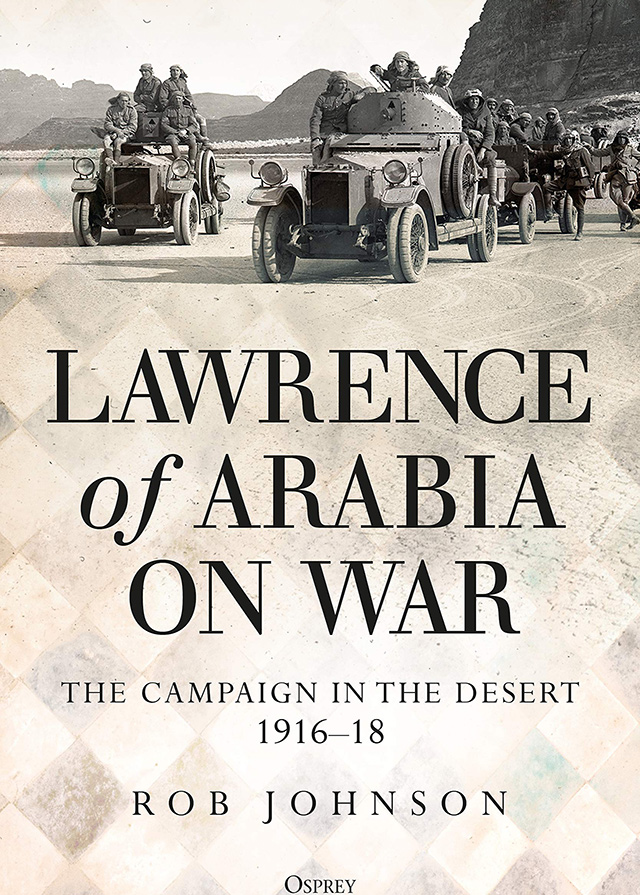Lawrence of Arabia on War: The Campaign in the Desert 1916-18
Book review

Lawrence of Arabia on War: The Campaign in the Desert 1916-18, Rob Johnson, Osprey Publishing, 2020, 368p, £25-00. ISBN 978-1-4728-3491-1
For those of us whose detailed knowledge of Lawrence of Arabia may have been drawn from Robert Graves’ classic Lawrence and the Arabs (1927), amplified by occasional textbook references, this really does introduce the substance of this crucial historical figure. From my personal perspective, it has also dispelled the widely held notion that somehow Lawrence was the model from which John Buchan’s Greenmantle (1916) was shaped, given that this book is based on Lawrence’s emergence as an influential tactician between 1916 and 1918. It is a very detailed account but it draws us into exactly what was happening in the Arabian military theatre as the Ottoman Empire struggled to survive.
At a strategic level, this volume is the key to understanding how this Oxford historian and archaeologist emerged as a major strategic tactician. Rob Johnson details how Lawrence’s unconventional approach to warfare had been informed by his academic study of military strategists. Lawrence had realized that warfare did not have to be conducted in traditional battle formation and that small tactical forces could prove extraordinarily effective against very substantially larger armies. Lawrence had a good strategic eye for tactically advantageous potential locations for skirmishing and, therefore, for undermining the enemy. His awareness was based on his knowledge of what others had achieved in the past in similar circumstances, largely in classical and European contexts. One specific example to demonstrate his foresight or insight was over a plan to attack the port of Akaba. The French favoured an attack from the sea but Lawrence persuaded the British leadership that such an attack would be far too hazardous because the Turkish position was so well-entrenched on a fortified elevated site. His advice was taken that an attack by small forces from the rear, arriving from an unexpected and greater distance would be more likely to succeed. This, of course, involved greater distance to be travelled across unpromising desert landscapes. This latter capacity to travel swiftly over very substantial distances with limited numbers of troops was, of course, one of the hallmarks of Lawrence’s approach, which becomes apparent in this very thorough survey.
The third value that arises from this book is highly contemporary. In examining the tribal inter-relations and rivalries, and their relative expectations, in a sense Rob Johnson is revealing the under-lying operational and strategic challenges that present themselves in the Arabian Peninsula in modern times. The tribal difficulties of Yemen reflect the historic allegiances of the groups in that region and the difficult relations which exist between Iran and Saudi Arabia can be traced back to tribal and spiritual rivalries in Lawrence’s time. Once we have understood what Lawrence and those whom he advised had to confront, it becomes clearer why today’s difficulties cannot easily be resolved.
This book by Rob Johnson has a strong appeal at so many levels and is thoroughly recommended.

